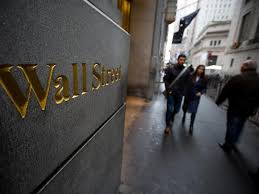Wall Street’s ‘fear gauge’ spikes but unlikely to be pointing to a market crash

Wall Street’s ‘fear gauge’ is soaring again, as investors spooked by Thursday’s market decline rushed to load up on options protection, but analysts said the intensity of the move in volatility does not necessarily point to a market crash.
The Cboe Volatility Index , which for weeks had been easing toward its longer-term average price of 19.4, on Thursday jumped 7.03 points, its largest one-day rise since June 11, and ended the session at a nearly 10-week closing high of 33.60.
Recently, the VIX and S&P 500 index .SPX broke their historical pattern of moving in opposite directions by moving higher together, alarming some investors.
The jump in volatility on Thursday produced massive moves in volatility-linked exchange traded products. The ProShares Ultra VIX Short-Term Futures ETF (UVXY.P) jumped 20%, while the ProShares Short VIX Short-Term Futures ETF (SVXY.P) slumped 6.8%.
Prior to Thursday’s market drop investors were lapping up bullish call options in a bet that the market would continue to post new highs, said Rick Rieder, who runs BlackRock’s $23.2 billion Global Allocation Fund.
“The amount of call buying that’s been going on the last week or so, the amount of just straight buying at high valuations has been pretty extraordinary,” said Rieder.
“Some of that is being unwound pretty quickly.”
For Randy Frederick, vice-president of trading and derivatives for Charles Schwab in Austin, the spiking VIX does not herald a big market crash.
“The VIX is going to continue to trend higher for the next two months, regardless of what the equity markets do,” Frederick said.
“It is a thing to pay attention to, but it does not show impending doom, or that the market is going off a cliff,” he said.
A part of the recent climb in the VIX has to do with how VIX futures and the spot index converge at monthly futures expiration dates. With the U.S. election nearing, there is a big gap between the VIX, which only covers a 30-day period, and longer-dated futures that cover the election.
It would take a big downward move in the price of volatility futures to narrow that gap, something that is unlikely to happen with market anxiety high as the election approaches, Frederick said.
